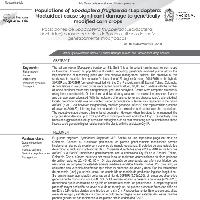Resumen
- The fall armyworm (Spodoptera frugiperda (J.E. Smith)) is an important harmful pest for corn crops in Colombia. Knowing its population's fluctuation regarding genetically modified plants allows the implementation of monitoring plans and time-effective management actions. The objective of this study was to establish the population's fluctuation of S. frugiperda during 2014-2016 in the hybrids 30F35R and 30F35HR (genetically modified with the Cry1F endotoxin) in El Espinal, Tolima, Colombia. Accumulations in five growing cycles were carried out until 20, 40, 60, 80, and 104 days with the number of larvae per linear meter after emergence per year and per hybrid. Results were compared statistically using linear mixed models. On the other hand, two dummy variables that reckon the presence of larvae and damage were calculated. With the indicators of presence (one) and absence (zero), a longitudinal logistic prediction model was constructed. Larger accumulation of larvae was registered in the hybrid 30F35R (6.79±0.20); however, the genetically modified genotype 30F35HR also registered the presence of larvae (4.24±0.20), inferring that the endotoxin did not exercise total control over the populations. The vegetative stage showed a higher larval population. However, when this stage is not managed, the crop can show damage up to 52% and 72% in hybrid plants with and without Cry1F, respectively. This behavior suggests that if refuge areas and strategies such as pest monitoring are not established, these insects could generate higher resistances to the plants with the endotoxin Cry1F.
